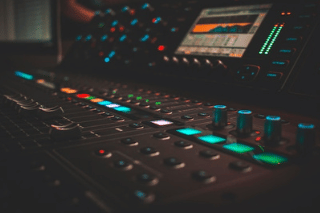The Rise of 1980s EDM: A Nostalgic Journey
Electronic Dance Music (EDM) has become a global phenomenon in recent years, captivating audiences with its infectious beats and energetic performances. While EDM may seem like a modern genre, its roots can be traced back to the 1980s, a decade that saw the emergence of electronic music and the birth of a new wave of sound. In this blog post, we will explore the fascinating world of 1980s EDM, diving into its origins, influential artists, and lasting impact on the music industry.
Origins of 1980s EDM
The 1980s marked a significant turning point in the history of music. Advances in technology, particularly the advent of synthesizers and drum machines, revolutionized the way music was created and produced. These new electronic instruments allowed musicians to explore uncharted territories and experiment with sounds that were previously unimaginable.
One of the key factors that contributed to the rise of 1980s EDM was the development of MIDI (Musical Instrument Digital Interface) technology. MIDI enabled electronic instruments to communicate with each other and with computers, paving the way for endless possibilities in music production. This breakthrough technology played a crucial role in shaping the sound of 1980s EDM.
Influential Artists of the 1980s
The 1980s saw the emergence of several influential artists who helped shape the sound of EDM. One such artist was Kraftwerk, a German electronic music group widely regarded as pioneers of the genre. Known for their innovative use of synthesizers and robotic vocals, Kraftwerk’s music laid the foundation for many future EDM artists.
Another iconic figure in 1980s EDM was Jean-Michel Jarre. The French composer and performer pushed the boundaries of electronic music with his groundbreaking albums, incorporating elements of rock, classical, and jazz into his compositions. Jarre’s spectacular live performances, featuring elaborate light shows and laser displays, captivated audiences and set the stage for the extravagant EDM productions we see today.
Other notable artists of the 1980s EDM scene include Depeche Mode, New Order, and The Prodigy. Each of these artists brought their unique blend of electronic sounds and catchy melodies to the forefront, leaving an indelible mark on the genre.
Impact on the Music Industry
The impact of 1980s EDM on the music industry cannot be overstated. The experimentation and innovation of this decade laid the foundation for the electronic music we enjoy today. The use of synthesizers and drum machines became more prevalent, not only in EDM but also in other genres such as pop, rock, and hip-hop.
The influence of 1980s EDM can be heard in the music of contemporary artists who continue to push the boundaries of electronic music. From Daft Punk to Calvin Harris, these artists have embraced the sounds of the past while infusing their own unique style, creating a fusion of old and new that resonates with audiences worldwide.
Educational Opportunities in 1980s EDM
For those interested in pursuing a career in the music industry, understanding the history and evolution of EDM is essential. Thankfully, there are numerous educational opportunities available to help aspiring musicians, producers, and DJs hone their skills and gain a deeper understanding of the genre.
One notable program is the NYU x Billboard | Music Industry Essentials online course, which offers an online course that delves into the world of EDM and its impact on the music industry. This comprehensive course covers topics such as music production, artist management, marketing, and live event production, providing students with the knowledge and skills they need to succeed in the fast-paced world of EDM.
Conclusion
The 1980s was a pivotal decade for electronic music, giving birth to the genre we now know as EDM. The technological advancements and innovative sounds of this era laid the foundation for the explosive growth of EDM in recent years. As we continue to enjoy the beats and melodies of contemporary EDM, it’s important to recognize and appreciate the roots of this genre in the music of the 1980s. Whether you’re a fan, a musician, or an industry professional, the legacy of 1980s EDM continues to shape and inspire the world of electronic music today.
Key Takeaways
- The 1980s marked a turning point in music history, with the emergence of electronic instruments like synthesizers and drum machines.
- MIDI technology revolutionized music production, allowing for unprecedented experimentation and sound exploration.
- Influential artists like Kraftwerk, Jean-Michel Jarre, Depeche Mode, New Order, and The Prodigy shaped the sound of 1980s EDM.
- The impact of 1980s EDM can be seen in contemporary electronic music, with artists incorporating elements of the past into their own unique styles.
- For those interested in a career in the music industry, educational opportunities like the NYU x Billboard | Music Industry Essentials online course offer comprehensive online courses in EDM and the music industry.
- Understanding the history and evolution of EDM is crucial for aspiring musicians, producers, and DJs looking to succeed in this fast-paced industry.
To dive even deeper into the world of music business and gain a comprehensive understanding of the industry, consider enrolling in the NYU x Billboard | Music Industry Essentials online course and certificate program. This program, offered by Yellowbrick, covers essential topics such as artist management, marketing, and live event production, providing you with the knowledge and skills needed for a successful career in the music industry. Don’t miss out on this opportunity to further your education and pursue your passion for EDM and the music industry.







